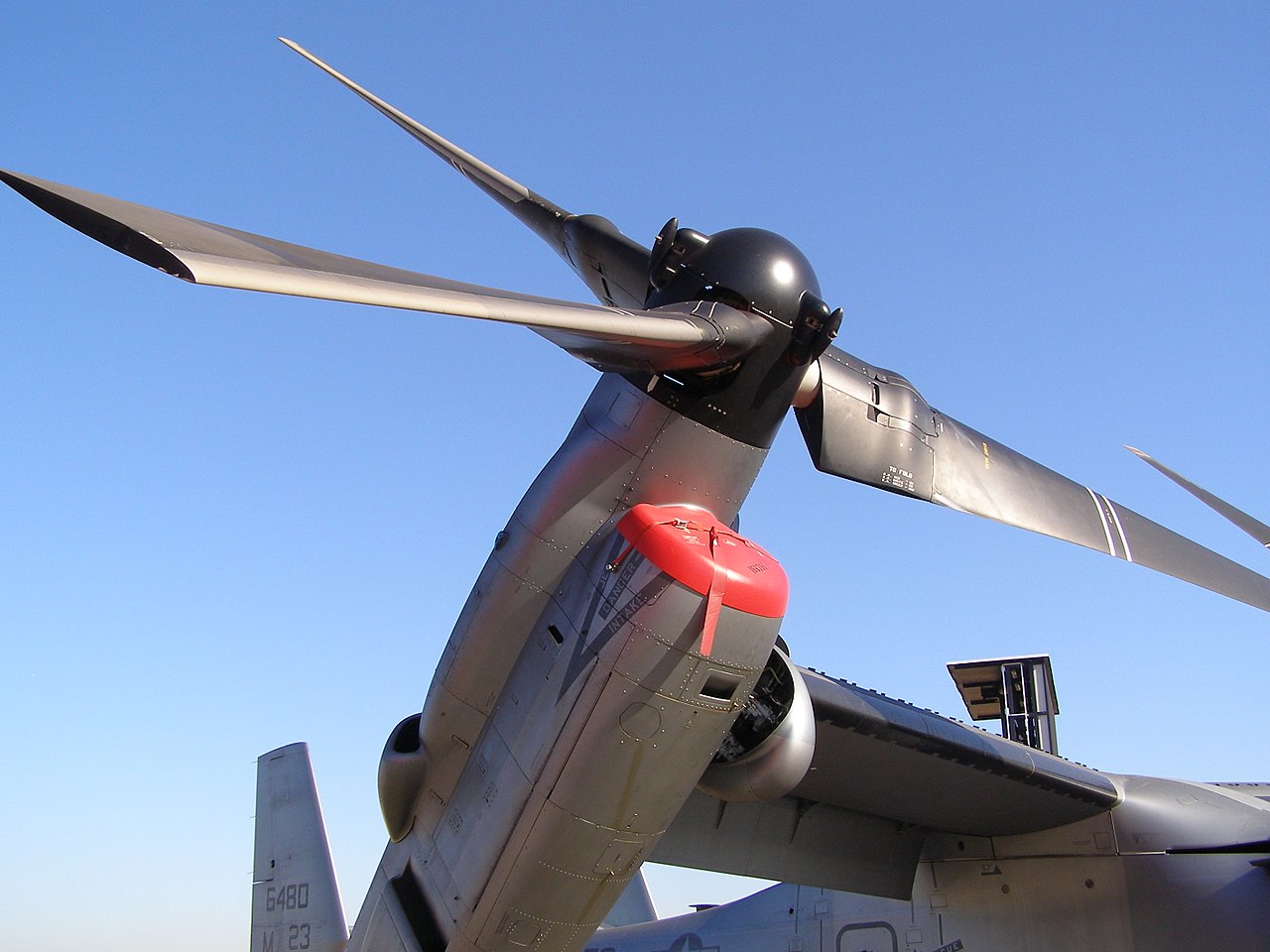Ariel Refueling
Bell Boeing
Osprey
Tiltrotor
USAF
V22
Bell Boeing V22 Osprey
Bell Boeing V-22 Osprey
 |
| © Chief Petty Officer Joe Kane (U.S. Navy) |
Operation Eagle Claw - A rescue mission in the 1980s for 52 embassy staff held captive in Iran had failed when a chopper struck a USAF C-130 killing eight servicemen. This mission might be one of those missions, whose failure led to the birth of the most unique aircraft in the aviation industry - Bell Boeing V-22 Osprey.
Design :
The Bell Boeing V-22 Osprey is the world's first tiltrotor aircraft. It has one three-bladed proprietor, turboprop engine, and transmission nacelle mounted on each wingtip. It might be the first of its kind which has both VTOL (Vertical Takeoff and Landing) and STOL (Short Takeoff and Landing) capabilities. This means that it takes takeoff like a fixed-wing aircraft with a small runway or like a helicopter if no runway is available at all. If it operates like a helicopter, the nacelles are in vertical position and the rotors are in a horizontal position. Once the aircraft takes off, the nacelles tilt forward 90° in 12 seconds for horizontal flight. This technique helps the V-22 Osprey to be a more fuel efficient and higher speed turboprop aircraft. With empty payload, it can fly up to 2100 nautical miles (ferry flight) and with payload, it can fly up to 1100 nautical miles (operational range). The Osprey is powered by 2 Rolls-Royce AE 1107C engines which can power the proprietors both through the wings and driveshaft.
The Osprey has a modern glass cockpit with night-vision-goggle-compatibility and multi-function displays that display the navigation and vital system information. The flight controls consist of a central control stick, thrust control levers, and rudder pedals. The control stick can function like a cyclic control during helicopter mode and also a traditional airplane control stick during fixed-wing aircraft mode! The V-22 Osprey has triple-redundant fly-by-wire flight control systems with FADEC (full-authority digital engine control) systems. There are three flight control computers, three navigation systems, three hydraulic systems, and four generators. The Osprey can safely fly with just one of each of the systems. The Osprey has a Cockpit Management System (CMS) which allows for autopilot functions that fly the aircraft from 50ft without any manual interaction. If we talk about how fast it goes, the Osprey cruises within a speed range of 170 to 240 knots and flies at a speed of 170 knots during an instrument approach to during holding patterns. The Osprey’s fuselage is not pressurized. If the aircraft is flown above 10,000ft, the crew is required to wear oxygen masks
 |
| © Senior Airman Julianne Showalter, U.S. Air Force |
 |
| © Airman 1st Class Russell Scalf |
Thanks for reading!
Suggested article: What is METAR and how to decode it?







